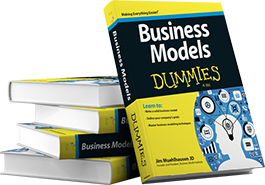After Crushing the Movie Rental Business Model, Netflix Crushes Itself
Netflix saw a meteoric rise in its stock price in 2010 after successfully weathering the devastating financial crisis that stifled wages, depressed consumer demand, and threatened just about every other retailer in existence. This was largely thanks to its relentless investment in video streaming and rising broadband access throughout the country after inventing a new way to distribute movie rentals–by mail–that crushed Blockbuster’s traditional business model and forced independent movie rental shops to close across the country.
The company could do no wrong at the beginning of 2011, as it saw its stock price surge. The company was even outperforming Apple and Google. By summer, there was a real possibility that Netflix’s stock price would surpass Apple’s.
Then it all collapsed.
Now, Netflix trades around $70 dollars per share, down over 60% from the beginning of the year. This precipitous drop began in the middle of September, shortly after the company announced that it would be splitting its DVD delivery and streaming services. The new DVD delivery service was to be rebranded Qwikster, which was abandoned within a month with a quick mea culpa from Netflix chief Reed Hastings. “There is a difference between moving quickly–which Netflix has done very well for years–and moving too fast, which is what we did in this case.”
The half-apology did little to placate investors as Netflix continued to hemorrhage users. It did not hold a monopoly on video streaming, with Hulu.com, Apple iTunes, and Blockbuster providing consumers with a number of options–not to mention the growing Video on Demand industry or, for that matter, illegal ways to download movies for free.
One of the reasons that Netflix had remained more popular than its competitors was its large selection and convenience. Netflix had access to thousands of movies, television shows, and other videos that users could request to watch immediately or add to their Netflix queue, essentially reserving the title for future viewing. At the same time, Netflix expanded to a variety of platforms–Netflix streaming was available on the Wii, Playstation 3, and Xbox 360, as well as several other popular devices, like the new Apple TV, Roku box, and Tivo DVR.
The firm’s broad market exposure and cozy partnerships with several competing vendors allowed consumers to choose not only what they could watch, but when and how. Combined with an easy-to-use interface and smart algorithm for recommending related titles that subscribers could watch, Netflix had utilized every technological edge it could to make itself a household name much faster than Blockbuster–its closest competitor–could catch up.
So when Netflix decided to divide its two delivery systems, it infuriated consumers who had chosen the company for its video needs because it empowered users with a variety of choices. All of a sudden, and without a clearly articulated reason, the company was taking much of that power away by forcing users to choose between conventional DVDs and the newer streaming technology.
Netflix’s apology that it had moved “too fast” hardly placated users and it certainly hasn’t impressed investors (the company’s stock is down a further 50% since Netflix reversed its decision). One analyst has called the company’s business model “broken”. We would agree.
What’s worrying is that Netflix CEO’s statement that they had moved “too soon” is a subtle threat that Qwikster might rear its head again, robbing consumers of the choice that brought them to Netflix in the first place.
The Lesson
While some could dismiss Netflix as acting too quickly, there is a much more significant lesson to be learned here. When a business provides consumers a product, there is a marginal product being offered at the same time. In Netflix’s case, the company’s explicit product was movies, but its implicit product was convenience. This marginal product was the real reason why consumers had chosen Netflix, and by abandoning its very successful business model, Netflix was robbing consumers of the one thing that drew them to the company in the first place.
Business owners should understand why customers are choosing them over their competitors and ensure that their business model maximizes the incentive for that choice. Likewise, they need to consider how any change to their business model will make the business more or less attractive to customers before acting. Only then can business owners begin to change their operations.
Netflix, tragically, acted without considering how it would affect customers’ perceptions of the business, and is now paying the price.










